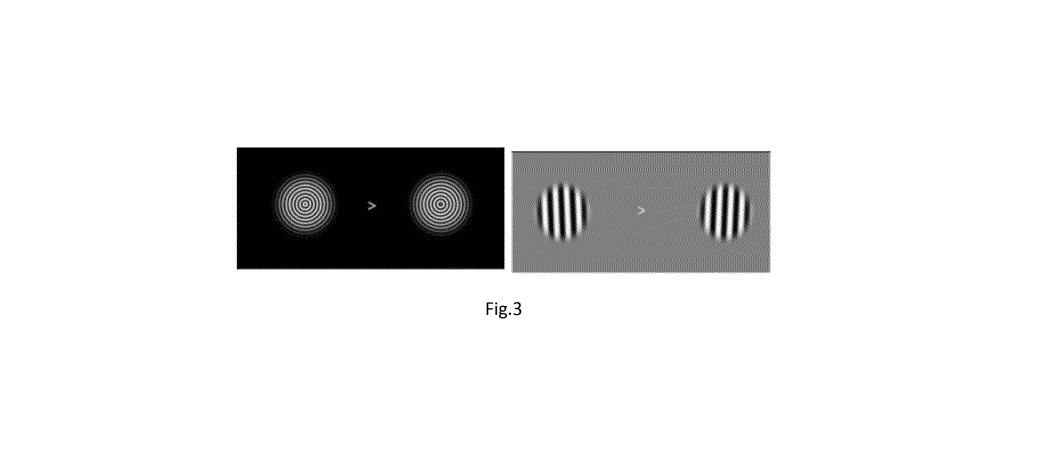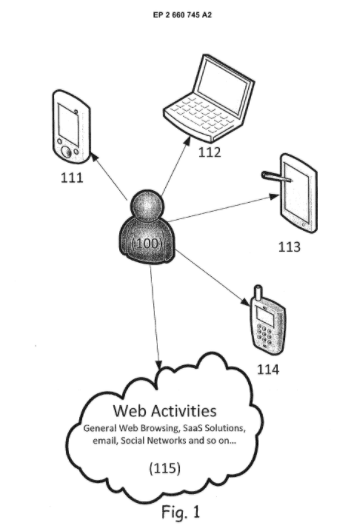This World Mental Health day we look at seven patent applications relating to technological advances in mental health, and the impact of our digital lives on our mental wellbeing.
Digital technology is an increasing part of everyday life, connecting the world and bringing information to our fingertips. The amount of tech in the area of mental health is also increasing. The number of apps directed to mental health problems are increasing exponentially (who hasn’t been offered online therapy with a bot?!), as are the number of start-ups in the field of mental health. Funding for mental health start-ups nearly doubled in the past year ($852 million in the first quarter of 2021). Whilst on the surface this is a positive (more money and attention to the world of mental health, as well as reducing stigma), it’s not all good news.
Studies have linked the rise of digital technology in our lives to a decrease in mental wellbeing. The impact that living through a digital age has on our minds is still largely unknown. Increased social medial usage can lead to isolation and low self-worth; obsessively tracking physiological data can feed into health anxiety, body dysmorphia and eating disorders; and many health apps are dangerously unregulated. You wouldn’t be blamed to question whether we were more mentally well before the digital age.
Is technology only harming our mental health? I hope not. As well as being a huge mental health advocate, I am, of course, a patent attorney. As all patent attorneys know, the best way to keep your finger on the pulse of innovation is through searching patent filings and a few excellent diagrams.
I scoured Espacenet for evidence that we can harness the good in technology to improve our mental health. Below are the seven most interesting recent applications I found on my quest.
-
Can you smell something?
Did you ever wonder if what you can smell might indicate whether or not you have depression? Olfaction (smell) is known to be closely related to emotional processes and mood, and several studies have looked into whether odour impairment is related to psychiatric disorders. This application discloses a test of olfactory abilities to determine whether the user is suffering from a major depressive disorder (MDD). Two samples, each containing two different odorants mixed together in varying concentrations, are sniffed by the patient. If the patient can’t adequately determine the differences between the samples, this is indicative of mood depression.
One of the odorants used actually sounds very pleasant, described in dependent claim 5 as one of “anise, apple, banana, caramel, chocolate, cinnamon, clove, cocoa, coconut, coffee, cola, dill, eucalyptus, fish, flower, honey, garlic, ginger, grapefruit, grass, lavender, leather, lemon, lilac, lily of the valley, liquorice, melon, mint, mushroom, onion, orange, peach, pear, peppermint, pineapple, rose, spearmint, turpentine, raspberry, sesame oil, smoked meat, soy sauce and vanilla”. Lovely.
-
The plastic brain
This application really does seem like magic. In the words of the application itself, it is part of the ‘digital therapy continuum’ and enables the treatment of mood-related disorders by administering a ‘software as a drug’ solution.
People with depression are known to have less of a positive response to positive images than someone without depression. Further, our brains display ‘neuroplasticity’, meaning the cells of the brain (neurons) can change or be altered. This application essentially tries to hijack neuroplasticity to remould the brain and strengthen the user’s positive response to an image.
In the disclosed system, a person is shown a first image (similar to that in Figure 3 below) which induces gamma oscillations in their brain. Brain cells oscillate when seeing an image. When oscillating at certain frequencies, brain cells synchronise their activities. Gamma oscillations increase neuroplasticity in the brain, making it easier to ‘remodel’.
 |
So the first image is displayed, making the brain cells primed and ready to be remodelled. Next, an image the person enjoys (in technical terms, an image having ‘positive-valence laden’ content) is shown. This could be anything which raises positive feelings for the user, from an image of the person’s family to a cute dog. In its neuroplastic state, the brain works to reinforce the positive feelings and connections the user has in response to the image. Fascinating.
The idea that looking at images on a screen can help to lift the symptoms of depression is mind-blowing to me. Personally, I can’t wait to try this technology, and I’m sure I’m not the only one.
-
The heart beat mood tracker
This application entitled 'Mood analysis method, system and apparatus' relates to a medical device which uses ECG (electrocardiogram) analysis to determine the user’s heart rate. ECG analysis is used to determine the state of the sympathetic and parasympathetic nervous systems. These systems activate in response to depression and anxiety disorders and can be analysed to determine the user’s mood.
The application discloses a ‘mood analysis system’ that analyses and displays a user's mood according to the user’s ECG. Figure 4 (below) shows the mood display coordinate system. Pretty cool, eh?
-
Monitoring for a mental health crisis
This application, ‘Mental health digital behaviour and monitoring system and method’, shows that it’s not just physiological behaviours that can be monitored to determine our state of mind. In the system, online ‘activity data’ from a user is collected and tracked. This data could relate to any online activity (social media, emails, browsing, and even Netflix consumption!). The data is analysed using AI algorithms. Irregularities are flagged by comparing the activity data to a baseline. An alert may be sent to a mental health professional if an irregularity indicates the user is having a mental health crisis.
Although it might feel a bit ‘big brother’, this system could fill an important gap in mental health treatment. As explained in the application, “currently [the caregiver] is unable to monitor a patient’s condition between appointments”. This can be critical if a patient’s condition worsens, or when a patient changes medication. The disclosed monitoring system further doesn’t require the patient to complete a questionnaire about their current mood, which can be a daunting task when in psychological distress.
|

|
-
AI movement analysis
As in every other area of innovation, AI is making its way into the field of mental health treatment and diagnosis. This patent describes collecting movement data from a wearable device, and using an artificial neural network to detect a psychological disorder. The artificial neural network is trained on training data. Once trained, patient data is presented to the network, which produces an output label (classification) distinguishing “between persons with psychological disorders, and persons without”. All based on how someone moves.
-
Genetic markers for mood disorders
Moving from Tech to biotech (there is increasing crossover these days) we have two applications (here and here) relating to genetic markers for mood disorders and risk of suicide.
In laymens terms, the first application discloses that a blood sample reading is taken from a user and compared to a group of blood sample readings from healthy people. The comparison can show whether a mood disorder is present. In non-laments terms (I’m a physicist, so biologists, please bear with me), a concentration of monoamine oxidase-A MAO-A in a patient sample is compared to the concentration of MAO-A in a control group that does not have a mood disorder. This can diagnose a mood disorder, or susceptibility to a mood disorder. The second application discloses specific markers in human genes (or ‘genotypes for plurality of single nucleotide polymorphisms SNPs’) which can be indicators of genetic risk of suicidal behaviour.
Mental health disorders can’t be “seen”, at least by the unqualified, in the same way many physical illnesses can be, which leads to the stigma around mental health and self-doubt over the validity of symptoms. Advances such as these, which provide tangible biological results, might help to overcome those issues.
-
The VR therapist
And finally, in a quintessential mental health treatment from the future, this application relates to a VR headset for simulating treatment from a doctor. Using virtual treatment can help to overcome the hurdles associated with in-person doctor appointments, by enabling auxiliary treatment without the presence of a medical professional.
The application discloses using VR technology to enact a storytelling technique. The system creates virtual scenes in an immersive user experience. Details of the scenes are chosen to have a desired effect on the user’s mood. Nice colours are chosen to lift the patient’s mood, and a positive storyline works to trigger positive thoughts and associations in the user’s mind. The scene can also be updated based on the patient’s current state, which is determined based on measured physiological data (brain waves, heart rate, etc).
Interestingly the application lists the associated effects of different colours. Did you know brown can eliminate loneliness, green can relax nerves, orange can induce appetite and normal mood, and yellow induce active thinking? It might be worth considering next time you’re decorating.
I’d love to hear whether, after our look into tech innovation in mental health, you are heartened or fearful of where we are headed. Personally, I’m excited that more research might lead to improved treatments, and increased attention might help us to reduce the stigma and taboo around mental health. Of course, many issues still need to be addressed. It’s likely that even if modern innovation causes positive moves forward in the treatment of mental health problems, it will not be available to the vast majority.
As well as innovating new mental health treatments, we need to be mindful of the causes. We particularly need to remember that technology can have a negative impact on mental wellbeing, so we should treat it carefully and use our power for good. As with everything, we can be grateful for and careful with the innovation we have, and hope that the conversation in society around mental health can advance at a similar rate.
I hope that this world mental health day you know that mental health problems are very real, are very normal, and are valid. As the above examples show, diagnosis and treatment is possible, and there is always hope for the future.
For more information; or to ask for advice on patenting mental health technologies in Europe, please contact Emily Collins or your usual Kilburn & Strode advisor.